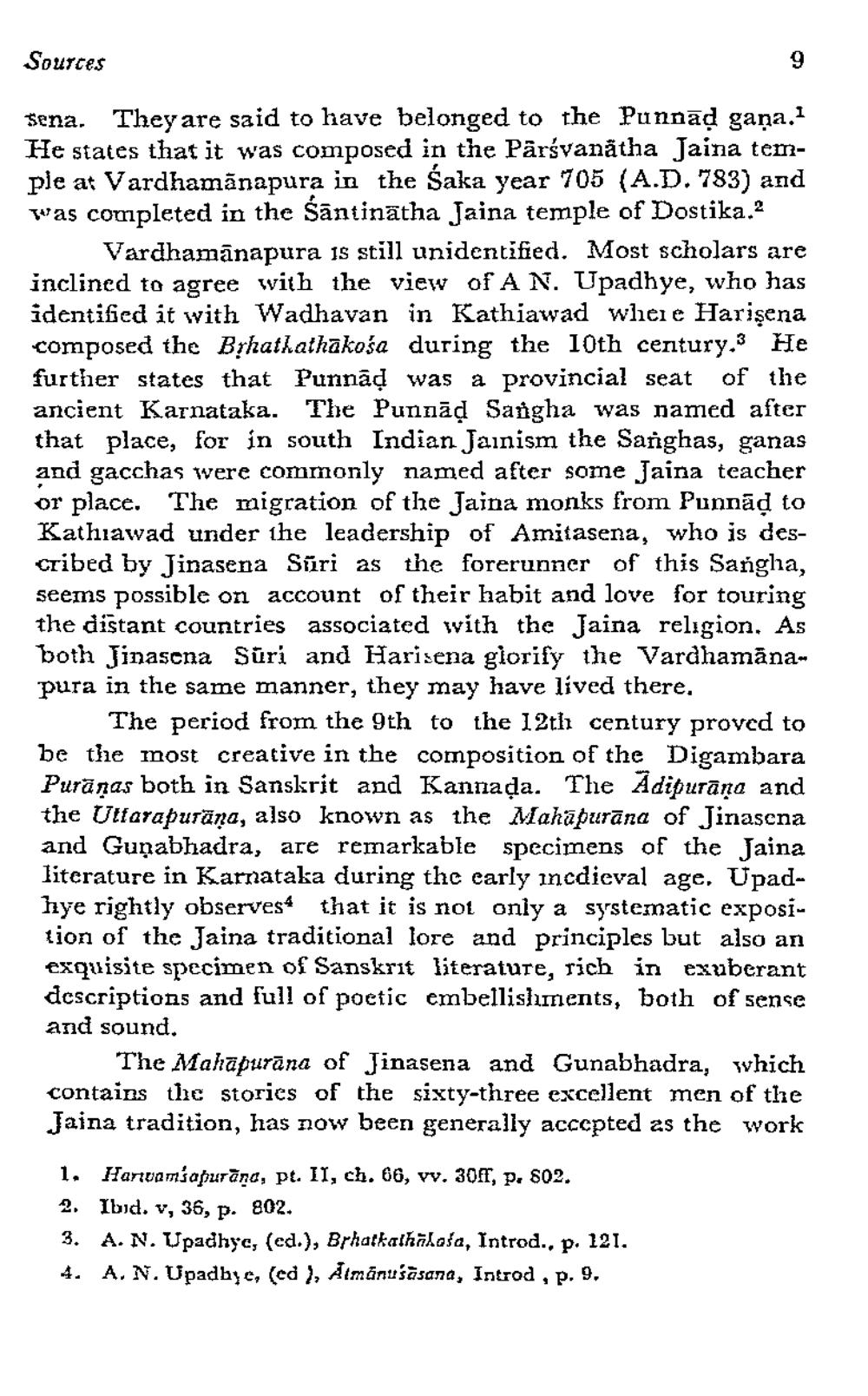________________
Sources
sena. They are said to have belonged to the Punnaḍ gaṇa.1 He states that it was composed in the Parsvanatha Jaina temple at Vardhamanapura in the Śaka year 705 (A.D. 783) and was completed in the Santinatha Jaina temple of Dostika.2
9
Vardhamanapura is still unidentified. Most scholars are inclined to agree with the view of A N. Upadhye, who has identified it with Wadhavan in Kathiawad where Harişena composed the Bṛhathathakośa during the 10th century. He further states that Punnaḍ was a provincial seat of the ancient Karnataka. The Punnaḍ Sangha was named after that place, for in south Indian Jainism the Sanghas, ganas and gacchas were commonly named after some Jaina teacher or place. The migration of the Jaina monks from Punnāḍ to Kathiawad under the leadership of Amitasena, who is described by Jinasena Suri as the forerunner of this Sangha, seems possible on account of their habit and love for touring the distant countries associated with the Jaina religion. As both Jinasena Suri and Harisena glorify the Vardhamānapura in the same manner, they may have lived there.
The period from the 9th to the 12th century proved to be the most creative in the composition of the Digambara Purānas both in Sanskrit and Kannada. The Adipurāṇa and the Uttarapuraṇa, also known as the Mahāpurāna of Jinasena and Gunabhadra, are remarkable specimens of the Jaina literature in Karnataka during the early incdieval age. Upadhye rightly observes that it is not only a systematic exposition of the Jaina traditional lore and principles but also an exquisite specimen of Sanskrit literature, rich in exuberant descriptions and full of poetic embellishments, both of sense and sound.
The Mahapurana of Jinasena and Gunabhadra, which contains the stories of the sixty-three excellent men of the Jaina tradition, has now been generally accepted as the work
1. Harwamsapurana, pt. II, ch. 66, vv. 30ff, p. 802. 2. Ibid. v, 36, p. 802.
121.
3. A. N. Upadhye, (ed.), Brhatkathākaša, Introd., p. 4. A. N. Upadhye, (ed ), Atmānusāsana, Introd, p. 9.




